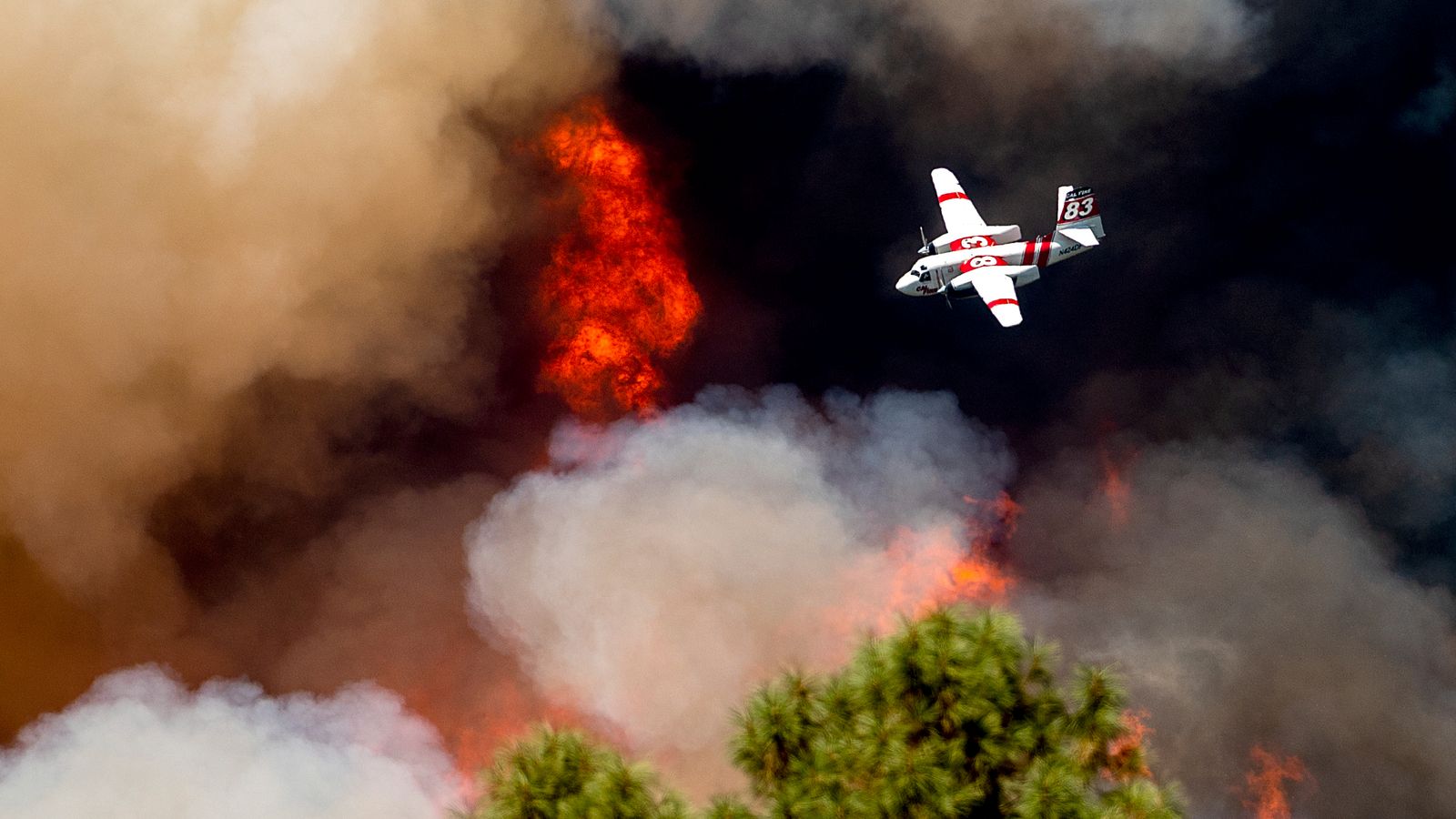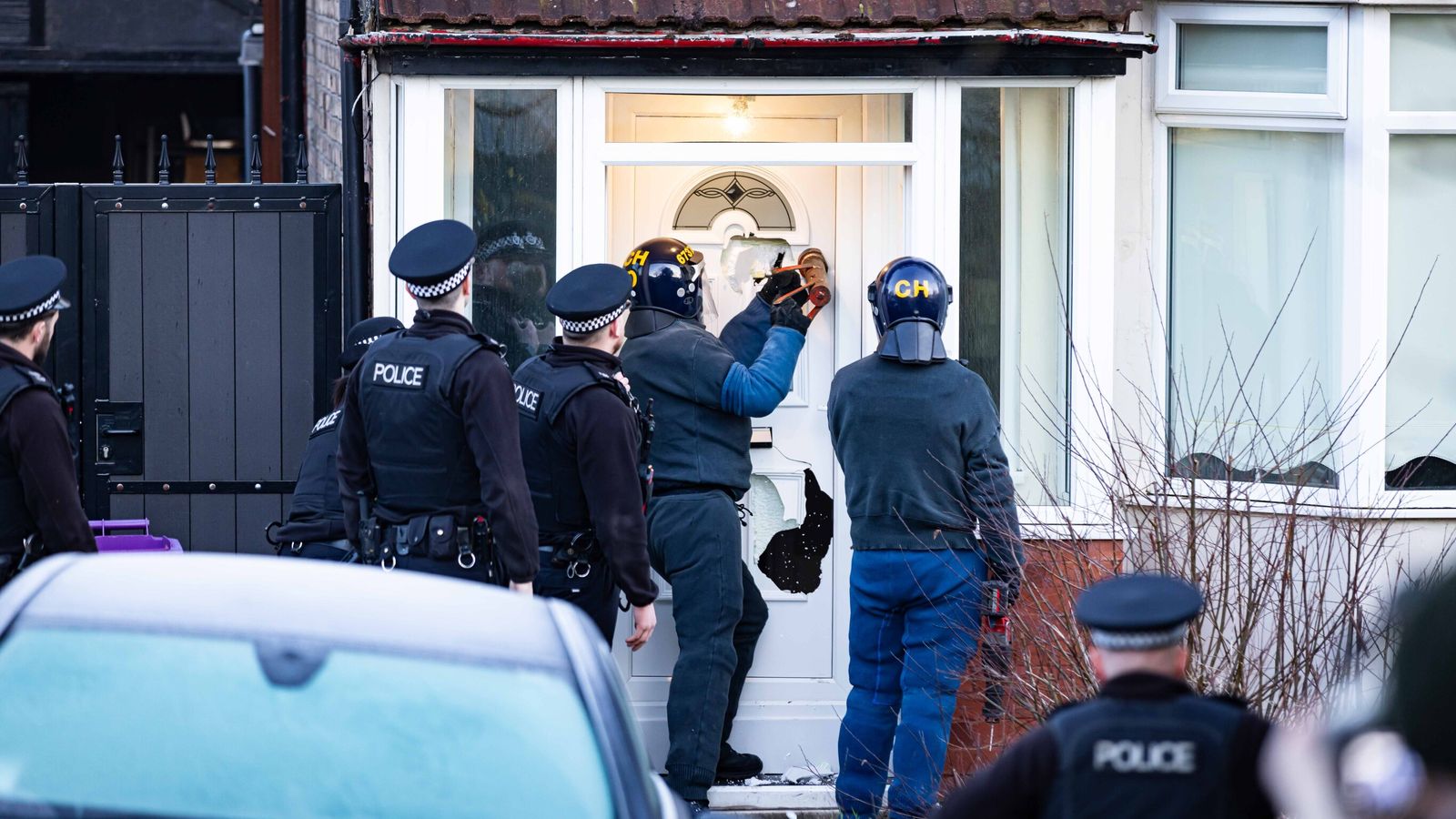In the town of Merced nestled in the foothills of the Sierra Nevada, 8am is rush hour
The roads are gridlocked, but with fire engines. These commuters are heading to a more dangerous workplace than most.
Among the 3,000 firefighters on this vast operation is battalion chief Jeremy Snyder.
He has brought his team more than 300 miles from San Diego to help out, and they are preparing to spend an uninterrupted 24 hours on the front line.
“The fatigue sets in,” he tells us. “You don’t get very many days off. It is mentally and physically challenging.”
Jeremy has been on the job for 25 years and he has noticed a shift. “We are having a rapid growth of fires, extreme fire behaviour that we normally don’t see until later in the fire season,” he says.
“In September and October we expect most fires to grow very rapidly and with that it will deplete our resources.”
More than 6,000 evacuated in California wildfires – but this is only the beginning
Dixie Fire: Historic blaze that destroyed nearly a million acres in California caused by utility firm’s equipment, officials say
California: Father and son plead not guilty to starting wildfire that saw 1,000 homes destroyed
Read more: More than 6,000 evacuated in California wildfires – but this is only the beginning
This team is in a race against time to protect the homes of people like Jacalyn Hagans and Peter Gutierrez, who we meet alongside their border collie Max at a nearby evacuation centre.
Peter is close to tears: “You work your whole life to accomplish something then to think that something like this can take it in a matter of seconds. It’s hard. Very hard.”
The Pacific Northwest is expected to see temperatures rise to 110 degrees in an unusually long heatwave. Parts of Washington state, Oregon and Idaho have extreme heat warnings in place, with the scorching temperatures expected to last throughout the week.
A state of emergency was declared across 25 counties as forecasters said Oregon could break its previous heatwave duration record. Emergency cooling centres have opening in public buildings and misting stations have been set up in parks.
On the other side of the US, more than 100 million Americans in north-eastern states have been warned about temperatures reaching triple digits.
Heat is the top weather-related “silent killer” in the United States and increases societal disparities that already exist from the cost of living crisis, inflation and the ongoing impact of the COVID pandemic.
At least 11,000 people in America have died due to heat-related reasons since 1979. President Joe Biden has unveiled a website to help Americans cope in the soaring heat. The website heat.gov includes weather forecasts, an interactive map and tips on how to stay cool.
The drive into the evacuated area is almost silent. There is no birdsong, just the occasional helicopter overhead on the way to drop retardant onto the flames.
Just a few days ago this was green woodland but the change is dramatic.
For a split second it almost looks like a winter scene because there are no leaves on the trees and they appear covered in something white. Yet this is not snow, but ash. And this is not winter but the height of summer.
The Oak Fire has not just ripped through forests but buildings and livelihoods.
We find one small house which has been utterly destroyed. There is nothing to salvage. A chimney stack and charred washing machine are the only signs of the home that was here just days ago.
The owners are now faced with a choice: move away or rebuild.
And why would you attempt to restart a life here when this devastation could happen all over again.








